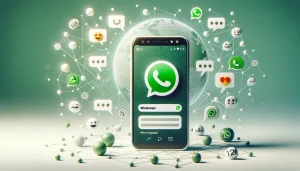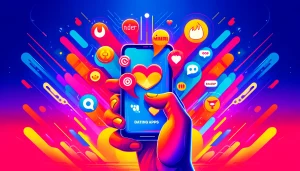In recent years, the way we consume music has undergone a real revolution, mainly due to the advance of mobile technology. In the early days, cell phones were not designed to serve as media players, but this quickly changed with the popularization of MP3 players and, later, with the arrival of smartphones. Before the smartphone era, it was common to transfer music files in MP3 format to the cell phone via USB cables or memory cards. These devices had limited storage capacity, and listening to music required patience to manage space and organize playlists manually.
With the arrival of smartphones and the integration of robust operating systems such as Android and iOS, app stores have emerged, providing access to a wide range of music software. Instead of relying on local files, users now have access to streaming services, which offer millions of songs at any time, directly in the palm of their hand. This has not only democratized access to different styles of music, but also made it easier to share and discover new artists.
Today, listening to music on a cell phone has become a much richer and more versatile experience, thanks to constant technological innovations and high-speed internet. In addition, the integration of cell phones with other devices, such as wireless headphones and smart speakers, allows the user to have an even more immersive and convenient listening experience.
Top apps for listening to music on your phone
Nowadays, there are a multitude of applications available for those who want to listen to music on their cell phones. Each app offers its own particular features, varying in terms of music library, functionalities and subscription models. Among the most popular are
- SpotifySpotify is undoubtedly one of the most widely used streaming apps in the world. It offers both a free version with ads and a paid version with additional features such as offline downloads and higher audio quality. Its user-friendly interface and personalized playlists make it an excellent choice for those who like to explore new sounds.
- Apple MusicApple Music is another well-known option, especially for users of Apple devices. In addition to offering a vast catalog of music, it stands out for its integration with the Apple ecosystem and superior sound quality in its Lossless and Hi-Res formats. In addition, the service has live radio broadcasts and lists curated by experts.
- YouTube MusicDerived from the famous video site, YouTube Music offers an experience focused on music videos and complete albums. One of its main advantages is the vast collection of rare or live content, as well as music videos that are not available on other platforms.
- DeezerAnother popular platform for listening to music on your cell phone is Deezer, which offers a similar business model to Spotify, with free and paid versions. What sets Deezer apart is its "Flow" feature, which creates a personalized radio station according to the user's musical tastes.
Each of these apps has its own particularities, and choosing the best one depends on the individual needs of those who want to listen to music on a daily basis. Whether it's the interface, the content or the specific functions, it's possible to find an app that fits each user's profile perfectly.
Advantages of Smartphone Music Streaming Services
Streaming services have brought numerous advantages to those who want to listen to music on their cell phones, completely transforming the audio consumption experience. One of the main benefits is the convenience of access. With a simple subscription or even using the free version of many of these services, you can have instant access to millions of tracks from every genre imaginable. There's no longer any need to buy physical albums or download songs individually - everything is available at the click of a button.
Another great advantage is the ability to discover new songs and artists easily. Many streaming apps, such as Spotify and Deezer, offer advanced algorithms that suggest songs based on the user's playback history. In this way, it's easy to expand musical horizons and discover emerging artists or tracks that might otherwise go unnoticed.
What's more, streaming services allow you to completely customize your music listening experience. Playlists can be created and shared easily, and many apps offer personalized curation options. Not to mention the flexibility of listening to music on several synchronized devices, such as smartphones, tablets, smart TVs and even voice assistants like Alexa.
How to Download and Store Music for Offline Listening on Mobile
Although streaming services are widely accessible via the internet, there are times when the connection is unavailable or limited. For these times, many apps offer the option of downloading music and listening to it offline. This feature is particularly useful for traveling, areas without network coverage or simply to save mobile data.
Downloading music on your cell phone is quite simple and varies slightly depending on the application. On Spotify, for example, simply select the song, album or playlist you want and click on the download button. The content will be available offline, allowing you to continue listening to music even without an active connection. Other apps, such as Apple Music and Deezer, also offer this functionality in their premium versions.
In addition, some applications allow you to store local audio files on your phone. This is useful for those who still have a collection of MP3s and want to integrate them into their digital library, unifying the whole experience of listening to music in one place. Whether you download tracks directly from the app or transfer local files, the possibility of listening to music offline is a great advantage offered by modern streaming services.
Comparing Free and Premium Mobile Music Services
When choosing a streaming service, users are often faced with two options: the free version and the paid (premium) version. Each of these options offers a different experience, with advantages and limitations that can impact the way you listen to music on your cell phone.
The free versions, such as those offered by Spotify and Deezer, allow access to the vast catalog of music, but with some restrictions. Music playback is usually accompanied by ads, and the user doesn't have full control over the order of the tracks, especially on mobile devices. Another common limitation is the impossibility of downloading songs for offline listening, as well as inferior audio quality.
On the other hand, the premium versions offer a much more complete experience. As well as eliminating ads, users have total control over playback, being able to skip tracks and create personalized playlists without interruption. The possibility of downloading music for offline listening and the superior audio quality are other attractions that make the paid version a popular choice among users who value a more fluid and uncompromising music listening experience.
Tips for Improving Sound Quality When Listening to Music on Your Phone
Listening to music on your cell phone can be an even more immersive experience if the sound quality is optimized. There are several ways to improve the sound performance of your smartphone, both through software adjustments and with the use of suitable accessories.
One of the first steps to improving sound quality is to adjust the equalization settings of the app or cell phone itself. Many music apps, such as Spotify and Apple Music, offer equalizer settings that allow you to shape the bass, mid-range and treble according to your preferences. In addition, investing in good quality headphones can make a big difference. In-ear or noise-cancelling models, for example, guarantee greater immersion and clearer sound.
Another tip is to ensure that the music files are in high quality. Many streaming services offer the option of selecting audio quality, which can vary depending on internet speed and user preference. By opting for superior quality, such as the Lossless audio offered by platforms like Apple Music, the music listening experience becomes much clearer and more enjoyable.
Features and Functionalities that Make Listening to Music on Your Phone Easier
In addition to the basic functionalities, many music apps offer extra features that make listening to music on your phone even more practical and enjoyable. One of these features is integration with voice assistants, such as Google Assistant or Siri, which allow the user to control music playback by voice commands, without the need to touch the phone.
Another interesting feature is the use of collaborative playlists, where several people can add songs to a shared list, ideal for parties or trips. In addition, many streaming apps offer personalized radios, created automatically based on the user's musical taste, making discovering new music a continuous and fun process.
Finally, device synchronization is a feature that makes everyday life much easier. With the same account, you can start playback on your cell phone and continue on other devices, such as smart TVs or smart speakers, without interruptions. These features add convenience and make the experience of listening to music on your cell phone even more personalized and integrated.
Conclusion
The way we listen to music on our cell phones has evolved dramatically over the years, moving from manually stored MP3 files to an accessible and personalized streaming universe. Today, with a wide range of apps, innovative features and both free and paid options, the mobile music listening experience is richer and more accessible than ever. Whether online or offline, anywhere, there are a multitude of ways to enjoy your personal soundtrack in a practical and engaging way.



